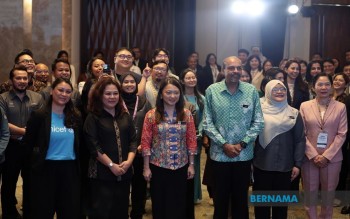ASEAN Trade: Removing Barriers & Vietnam's Role | VIR
The Association of Southeast Asian Nations (ASEAN) is undergoing a significant change, shifting from a region primarily attracting foreign investment to one increasingly acting as a key global investor itself. This evolution, coupled with a renewed focus on internal economic integration, presents both opportunities and challenges for the bloc’s continued growth. Recent data indicates that outward Foreign Direct Investment (FDI) from ASEAN nations has risen by 27% in the last five years, demonstrating a growing economic maturity and capacity for global engagement.
Historically, ASEAN has been lauded for its attractiveness to foreign capital, driven by factors like a young and growing workforce, abundant natural resources, and strategic geographic location. Though, the narrative is changing. Companies originating within ASEAN – especially from Singapore, Thailand, and Indonesia – are now actively investing in other regions, including developed economies. This outward investment isn’t simply about seeking higher returns; it’s also about securing supply chains, accessing new technologies, and expanding market reach.For example, Indonesian tech giant GoTo, after a successful IPO, has begun exploring investment opportunities in fintech startups across Southeast Asia and beyond. This trend signifies a deepening of ASEAN’s economic influence and a move towards greater self-reliance.
Despite progress in establishing the ASEAN Economic Community (AEC), significant hurdles remain in achieving truly seamless regional trade.While tariff reductions have been largely successful, non-tariff barriers (NTBs) continue to impede the flow of goods and services. These barriers encompass a wide range of obstacles, including complex customs procedures, differing product standards, sanitary and phytosanitary regulations, and licensing requirements. A recent study by the Asian Progress Bank estimates that NTBs add approximately 15-20% to the cost of intra-ASEAN trade.Consider the example of agricultural products. A farmer in Vietnam attempting to export mangoes to the Philippines may face stringent import regulations regarding pesticide residue levels, packaging standards, and quarantine procedures – even if the mangoes meet international standards. These complexities not only increase costs but also create uncertainty for businesses, discouraging cross-border trade.
Recognizing the limitations of relying solely on conventional trading partners,ASEAN is actively pursuing strategies to diversify its trade relationships. This includes strengthening ties with countries in South Asia, the Middle East, and Africa, as well as actively engaging in negotiations for new free trade agreements. The regional Comprehensive Economic Partnership (RCEP), encompassing ASEAN members plus Australia, China, Japan, New Zealand, and South Korea, represents a significant step in this direction, creating the world’s largest free trade area.
However, diversification isn’t just about geography. ASEAN is also focusing on expanding the range of traded goods and services, with a particular emphasis on promoting digital trade and investing in high-value manufacturing. Vietnam, for instance, is rapidly becoming a hub for electronics manufacturing, attracting investment from companies seeking to diversify their production away from China.
Beyond NTBs,deeper structural issues continue to hinder the expansion of businesses within ASEAN. These include inadequate infrastructure, particularly in less developed member states; limited access to finance for small and medium-sized enterprises (SMEs); and a skills gap in key sectors. A World Bank report highlights that logistical costs within ASEAN are, on average, 15% higher than in other comparable regions, substantially impacting competitiveness.
Furthermore,bureaucratic inefficiencies and a lack of transparency in regulatory processes create additional challenges for businesses. Streamlining regulations, investing in infrastructure development – particularly in digital connectivity – and fostering a more conducive environment for entrepreneurship are crucial steps towards unlocking ASEAN’s full economic potential. The development of a unified digital identity system across ASEAN, for example, coudl significantly reduce transaction costs and facilitate cross-border business operations.
ASEAN’s economic trajectory is marked by a dynamic shift towards greater regional integration and global engagement. While challenges related to trade barriers and structural impediments persist, the bloc’s commitment to diversification, innovation, and internal economic reform positions it for continued growth and influence in the years to come.










